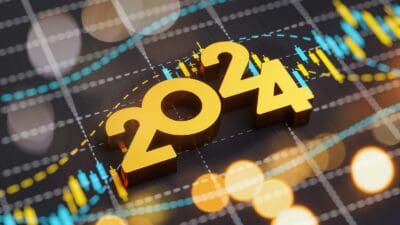The National Grid (LSE: NG) share price isn’t designed to shoot the lights out but it’s still up a solid 21.37% over five years. That easily beats the FTSE 100, which grew a modest 8.14% over the same period.
The last 12 months have been less impressive, with the stock up just 1.77%. That still beats the index though, which fell 3.29% over the same period.
While National Grid shares offer some growth, the big attraction is the income. Today, the stock yields an impressive 5.36%, comfortably ahead of the FTSE 100 average of 3.9%. The difference may seem slight, but it will compound nicely over time.
A top FTSE 100 income stock
Over 10 years, 5.36% a year would turn £10k into £16,856, while 3.9% would deliver only £14,661. That’s £2,195 less.
National Grid’s yield is marginally higher than Paragon Bank’s best buy easy access savings account, which currently pays 5.16%. As inflation peaks and interest rates potentially start falling, the difference should widen over time.
Two and five-year gilts now yield around 4%. National Grid’s yield beats gilts today and should do even better when interest rates start falling. But it’s important to remember that shareholder payouts aren’t guaranteed. Companies need to keep generating enough free cash to fund them.
On that front, National Grid looks safer than most. As a regulated utility, its revenues are considered among the most reliable on the index. They have more growth potential than I realised, as my table shows (allowing for the pandemic).
| 2019 | 2020 | 2021 | 2022 | 2023 | |
| Revenues | £14.99bn | £14.54bn | £13.67bn | £18.45bn | £21.66bn |
| Pre-tax profits | £1.84bn | £1.75bn | £1.66bn | £3.44bn | £3.59bn |
| Dividend per share | 47.34p | 48.57p | 49.16p | 50.97p | 55.44p |
| Yield | 5.6% | 5.1% | 5.7% | 4.3% | 5.1% |
That big 2023 revenue jump was down to a full-year contribution from UK electricity distribution, a strong operational performance in its US regulated businesses, and a higher contribution from National Grid Ventures.
Dividends and growth
It was further boosted by one-offs such as property sales and insurance payouts following the fire-damaged power link between the UK and France. The board has warned that earnings per share will fall by 6p or 7p this year. That’s mostly due to government changes to the capital allowance regime coming into force from April.
It also has to invest heavily in infrastructure. In November, it raised its planned capital spend by £2bn. We’ve seen how easily infrastructure costs overrun, so I’m worried there could be more to come. Net debt is forecast to hit a whopping £44.66bn in 2024 then £48.78bn in 2025. That’s more than its £38.5bn market cap. I wouldn’t like to see debt rising.
National Grid’s dividend is only covered 1.2 times. While utilities can get away with relatively thin dividend cover, it has less room for manoeuvre should cash flows disappoint.
The shares are forecast to yield 5.61% in 2024 and 5.75% in 2025. That gives investors a potential rising income over time. It would probably be fine to buy and hold even if the shares never rise again. Recent history suggests long-term investors may get both.
The stock isn’t cheap at 16.85 times earnings, but it rarely is. It’s been on my watchlist for years. It’s a decent stock but I like other FTSE 100 dividend shares more so it will probably stay there for now.








